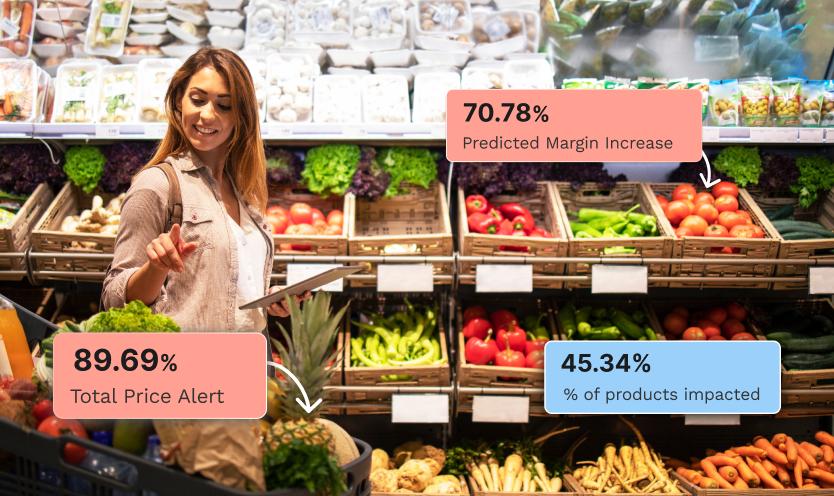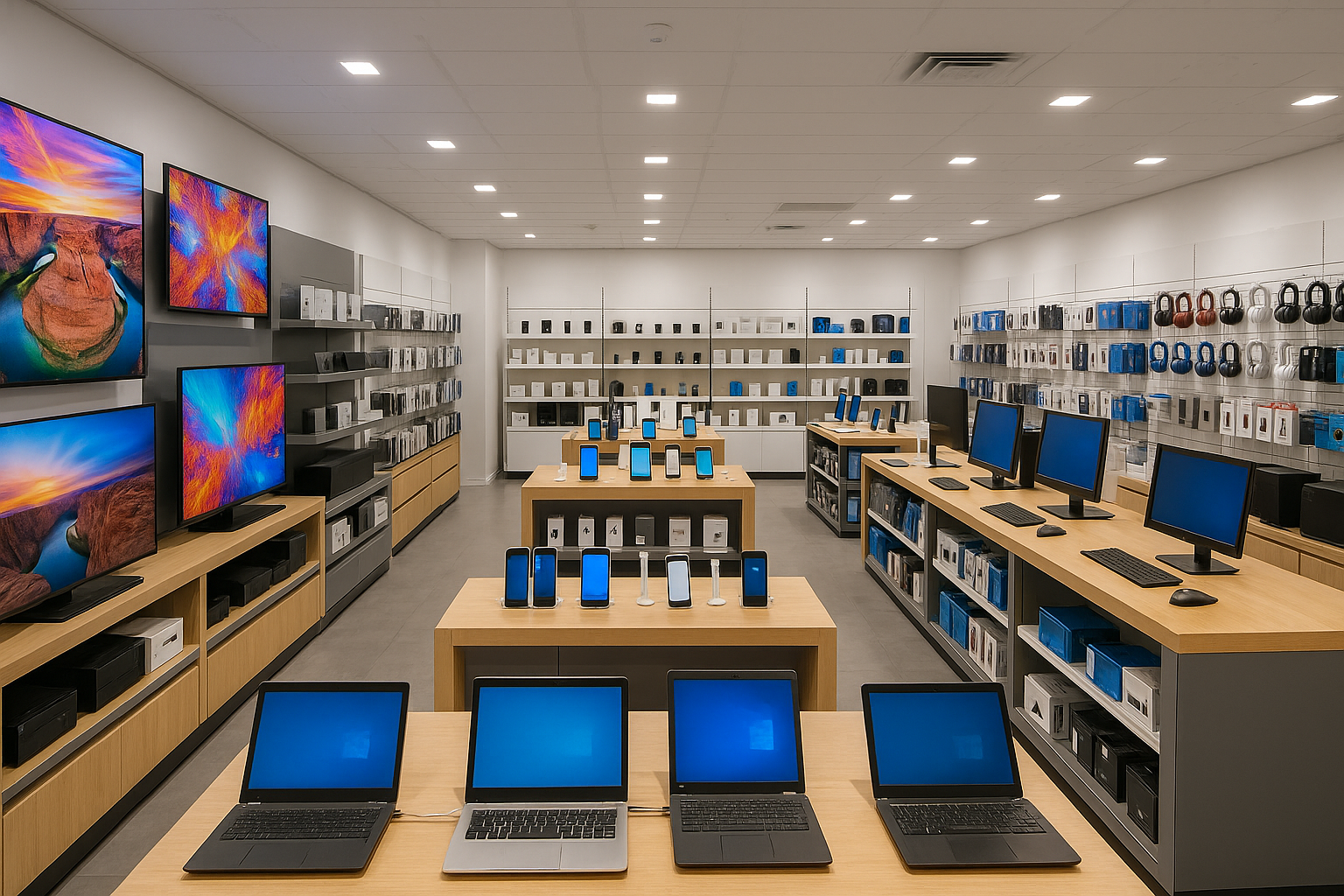Tariffs on Imports, Pressure on Profits: How Grocers Can React Smarter to Supply Chain Price Hikes
Tariffs on Imports, Pressure on Profits: How Grocers Can React Smarter to Supply Chain Price Hikes
Grocery retail is a game of tight margins and high volume. Every cent counts, and when input costs rise, so does the pressure to preserve profitability. In today’s volatile global trade landscape, tariffs have become one of the most unpredictable disruptors to this balance.
New trade policies and geopolitical tensions are driving sudden cost increases across key grocery categories, especially those reliant on imports. From fresh produce and packaged goods to frozen seafood and specialty ingredients, grocers are finding themselves caught between rising supplier costs and price-sensitive consumers.
A New Wave of Tariffs Is Hitting the Aisles
In 2025, the U.S. administration sharply escalated tariffs on imports from several countries, including raising tariffs on Indian goods to 50% in response to India’s continued purchases of Russian oil. Other reciprocal tariff penalties were also rolled out under the new scope of reciprocal tariffs, affecting agricultural and processed goods.
At the same time, India is weighing tariff cuts on over $23 billion of U.S. imports in order to shield about $66 billion of its own exports from U.S. retaliation.
For grocers, the impact is already clear: staples like rice, frozen shrimp, canned foods, and olive oil are facing double-digit cost hikes, with analysts warning food inflation could run at an additional 3–4% overall, with sharper spikes on heavily imported categories.
These increases are not temporary. For many retailers, these new costs are not baked into annual pricing strategies. That means teams are left scrambling to either absorb the increase or pass it along to consumers.
Before deciding how to respond, retailers must understand why the instinctive response — blanket price hikes can do more harm than good.
Why Blanket Price Hikes Are a Mistake

Faced with rising costs, many grocers default to across-the-board price increases. It’s quick, easy to explain, and on paper, it protects the margin.
However, in practice, it often backfires.
Uniform price hikes ignore key differences across regions, competitors, and customer behavior. They fail to consider:
- Price elasticity by ZIP code – A $0.50 increase on canned tuna might be acceptable in Seattle but could spark customer backlash in St. Louis.
- Competitive landscape – If local discounters or chains are not passing along the same increases, your price hike just sends traffic their way.
- Demand context – Some goods have substitutes or seasonal fluctuations. Blanket hikes ignore when and where you have pricing power.
The result is margin erosion in some zones, lost foot traffic in others, and reputational damage across the board.
This is why today’s grocers need a smarter, more dynamic approach — one that doesn’t just react, but adapts in real time to the market.
Localize, Don’t Generalize: Pricing in a Tariff World
This is where predictive, AI-powered pricing becomes a strategic advantage.
Using advanced analytics, grocers can shift from blunt cost recovery to ZIP-code-level precision. This includes:
Localized Elasticity Modeling
Not all customers respond to price changes the same way. Hypersonix Pricing AI evaluates local income levels, competitive density, historical sales, and price sensitivity — down to the neighborhood — to determine where you can raise prices, and by how much.
This enables grocers to:
- Pass on costs where elasticity is low
- Protect traffic where consumers are highly price-sensitive
- Avoid unnecessary markdowns in unaffected regions
What-If Simulations
Before any change hits the shelf, grocers can simulate its impact. Hypersonix’s Pricing AI allows teams to model different pass-through strategies, test various levels of increase, and see potential impact on margin, volume, and revenue.
Competitor Tracking to Avoid Overreaction
Tariffs don’t hit every grocer equally. While some may pass on the full cost, others may delay or avoid increases altogether. Hypersonix’s Competitor AI tracks local competitor pricing across SKUs and categories, so grocers can avoid over-correcting.
That means no more pricing in a vacuum — decisions are made with a full view of the market.
But how does this look in practice? Let’s take a look at the real impact when grocers deploy AI-powered pricing in a tariff-shocked category.

Real-World Example: Shrimp and the Smart Pass-Through
In 2025, U.S. tariffs on frozen shrimp imports climbed sharply, with duties on products from India and Vietnam rising by as much as 20%.
A regional grocery chain, sourcing much of its seafood from these markets, faced an immediate 18% cost spike on shrimp SKUs.
Rather than roll out a blanket price hike across all stores, the chain used Hypersonix to:
- Simulate different pass-through scenarios at 5%, 10%, and 15% to model consumer response
- Identify ZIP codes where seafood represented a higher share of total basket spend
- Layer in Competitor AI insights to track how rivals reacted, or chose not to adjust
- Deploy targeted pricing: applying an 8% increase in higher-income ZIP codes while limiting hikes to 0–3% in more competitive, price-sensitive markets
Results within 6 weeks:
- Gross margin loss reduced by 22% compared to a flat hike strategy
- Customer retention held steady in key districts
- Competitor defection rate dropped due to strategic bundling offers
This showed that precision, not panic, makes the difference.
Beyond protecting margin, smarter pricing in response to tariffs builds long-term customer trust and organizational agility.
AI That Builds Pricing Confidence: Not Just Reaction
Tariff cycles are rarely predictable. But with the right tools, grocers don’t have to be reactive. Hypersonix empowers pricing and revenue teams with:
- Real-time visibility into cost changes and SKU-level impact
- Local competitor intelligence to avoid overpricing
- Elasticity-informed recommendations to move quickly with confidence
- Integrated forecasting to simulate trade-offs and choose optimal strategies
It’s not just about passing on cost — it’s about protecting growth.
Conclusion: From Tariff Chaos to Pricing Control
Grocery retailers are no strangers to pressure. But when global trade decisions create sudden and uneven cost spikes, it’s easy to fall back on one-size-fits-all pricing.
That’s where many grocers lose margin, traffic, and customer goodwill. The real issue is not the tariffs themselves, but how retailers choose to respond.
Hypersonix helps grocers respond with clarity by simulating different outcomes, localizing strategies to each market, and giving them the tools to lead rather than follow.
Tariffs may be unpredictable, but your pricing strategy doesn’t have to be.





